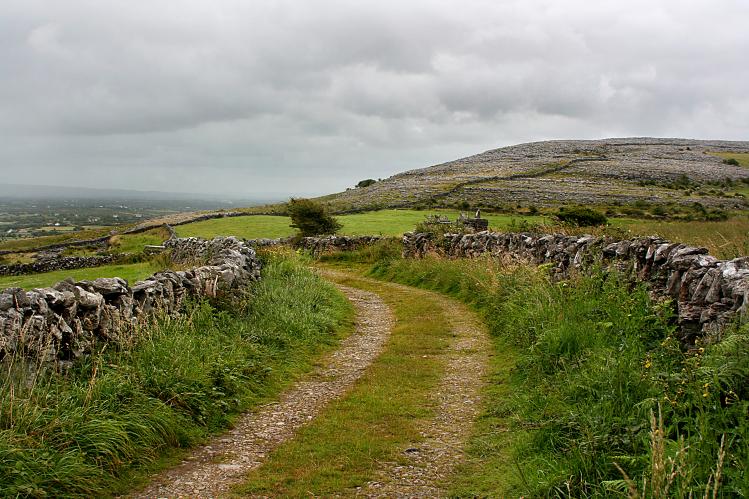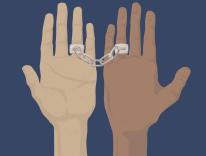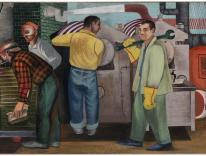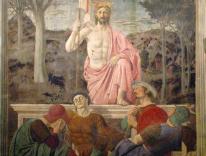
"I look at the people queuing at the till, and I wonder are they going home, or are they going far away from the people they love. There are no other journeys. And I think we make for peculiar refugees, running from our own blood, or towards our own blood; pulsing back and forth along ghostly veins that wrap the world in a skein of blood.” These words come from Anne Enright’s 2007 Booker Prize–winning novel The Gathering, and they express the central claim of the novel: that family is a determinative force, maybe the determinative force, in our lives.
The Gathering told a lurid story about sexual abuse and how the resulting shame might warp a life. But the novel was really the story of how familial history might warp a life, how it can become an obsession and a compulsion, the one thing that you can’t flee. Notice Enright’s constant recourse to blood imagery. Family is like a biological force. It flows through our bodies and drives our actions. Running from or running toward—either way, we are at the mercy of our families. They are always unsettling and haunting and exiling us.
Enright’s new novel, The Green Road, tells a similar story of family-as-fate—or, at least, family-as-determining-force. If The Gathering was a nasty story about nasty events told in a nasty style, then The Green Road appears, at least on its surface, conventional, almost anodyne. The novel follows the Madigans, an Irish family of six from County Clare, over the course of thirty years. Family members die; tragedies occur or are narrowly averted; the family breaks apart and is brought together again by a dramatic event. It all sounds like something from Oprah’s Book Club, and a far cry from the fetid atmosphere of The Gathering.
The novel opens with the kind of scene that most draws into relief the contours of familial relations: the holiday dinner. The year is 1980, and Dan Madigan has just told his family that he is to become a priest; the news has not been well received, particularly by Dan’s mother, Rosaleen. While eating dinner on Palm Sunday, Dan tries to justify his decision and Enright focuses in, with precise detail, on Rosaleen’s reaction: “A moan came out of her, small and unformed. The sound of it seemed to please as well as surprise her so she tried again. This next moan started soft and went long, and there was a kind of speaking to its last rise and fall.”
Enright’s prose constantly surprises, both with its psychological acuity (how she notices, for example, that the expression of grief can become its own source of pleasure) and with its unusual, poetic phrasing (the description of how Rosaleen’s cry “started soft and went long”). Less surprising is Enright’s use of this familial scene to quickly sketch the Madigans. Each member of the family is characterized by his or her reaction to Rosaleen’s cry. Her husband Pat leaves the room quietly, removing himself from responsibility; Constance, the eldest, “bossed them all quietly about” and tries to patch things up; Emmet, Dan’s younger brother, snorts at the specter of sex (Rosaleen is upset, in part, because her eldest son will not have a family); Hanna, the youngest, looks on bewildered, unclear about what has happened or how the new state of affairs can be squared “with the small matter of Dan’s girlfriend, who had yet to be informed.”
Each character has been placed, and we understand that, though the event described here is particular, the dynamics are not. Who we are, Enright suggests, is largely who we are within the delicate ecosystem of the family. Rosaleen’s dramatic self-pity, we sense, is the sun around which the family orbits. This sense is confirmed when, pages later, we hear that Rosaleen ultimately responds to Dan’s decision by taking “the horizontal solution”—that is, by retiring to her bed for days on end—and that this was not the first time she has done so. The dinner scene is like a seventeenth-century Dutch painting: it introduces us to an entire world through its patient attention to a single moment in time.
Yet this careful scene-setting is soon upset. In a move that typifies the novel’s first half, the next chapter takes an unexplained leap forward. It’s now 1991, and we’re suddenly in New York City rather than Ireland. Dan isn’t a priest but a Yeats- and Whitman-quoting shoe salesman who is “moving into the art scene.” He’s also engaged to a woman named Isabelle but is sleeping with a man named Billy. The reader feels unsettled: Where is the rest of the family we’ve just come to know? What happened to Dan’s vocation? These questions aren’t really answered, at least not right away. Enright instead immerses us in the lively, death-haunted world of New York City’s gay population in the midst of the AIDS crisis. Some of this is well done, as when the narrator quietly notes that Billy’s address book was “thick with WiteOut, like everyone’s address book in those days.” Some of it is a bit silly, especially Enright’s decision to use a gossipy first-person-plural narrator for this section: “And of course we all knew he wasn’t really queer, he was just queer for Billy, because who wouldn’t be? It wasn’t like he wanted to go down on—I don’t know—Gore Vidal.”
Then, just as we’re getting used to things in New York, the next chapter jumps ahead again, this time to County Limerick in 1997, with Constance—married and with children, living a solid if boring middle-class life—waiting to hear if she has breast cancer. Then, in the next chapter, it’s 2002 and Emmet is an ascetic aid worker living in Mali with a woman named Alice and a mangy dog named Mitch. Then, it’s 2005 and we’re back in County Clare with Rosaleen, who is now sixty-seven years old and sending off Christmas cards to her children. Her life feels unmoored—her husband has died and her children are scattered—and Rosaleen decides to sell the family house.
***
Why all this hopscotching through time and place? The unsympathetic reader might argue that Enright is merely showing off: See, I can write about gay culture in New York and Irish culture with equal brilliance! And there may be something to that. But the more forgiving reader will counter that Enright uses this structural gambit as a way to test the bonds of family, to prove that, even when the Madigans have removed themselves from home, they still act out their primal roles. Constance, for instance, still plays the comforter, offering kindness to a stranger in the hospital waiting room and then to her children at chapter’s end. Dan is still a source of drama and rebellion; it’s just that his rebellion has gotten louder. And Rosaleen remains, as ever, “a woman who did nothing and expected everything. She sat in this house, year after year, and she expected.”
The first half of The Green Road is titled “Leaving.” Its second is called “Coming Home” and, once we’ve arrived at 2005, we stay there. The Madigans—minus the deceased Pat—return to County Clare for another holiday dinner, this time for Christmas. Old dynamics are reactivated, and old sources of resentment (the breaking of a Belleek jug, for instance) flare up and then die out. When Hanna asks her mother if she is feeling all right, Rosaleen responds, “I think so. Yes.” Enright then describes “Rosaleen’s precision turning, as ever, into a kind of general difficulty for them.” This is a small but perfectly placed detail, telling us so much about Rosaleen’s self-pity and the frustration it leads to. The novel’s final hundred pages are filled with such moments, as the Madigans try to deal with Rosaleen’s decision to sell the house, and with Rosaleen herself.
Where earlier sections stayed focused on a single character’s perspective, the last bit roves about, dipping into a particular character’s consciousness and then moving on to another’s. But the richest character in this final section is Rosaleen. In certain ways, she seems to conform perfectly to convention: the maudlin, controlling Irish mother who dominates the family, whose every word or gesture demands some kind of attention. But Enright shows how Rosaleen’s interiority is more complicated than it might appear:
Why she could not be nice to them, she did not know. She loved them so much. Sometimes she looked at them and she was so flooded with love, she just had to go and spoil it. It made her angry in the afterwash. They were so beautiful. They used to be so beautiful. They were so trusting and good. It made her feel not good. Unappreciated. It made her feel irrelevant.
The passage has a simple but jagged feel to it. Rosaleen loves her children, and this love makes her angry; she finds her children good, and this makes her feel bad. Enright doesn’t explain away the incoherence. Rather, she shows how Rosaleen’s emotional life is built precisely out of an inconsistency of attitude that can’t be smoothed away. So too, The Green Road suggests, is family life. It’s a source of both love and anger. It’s the thing that forms us, for good and ill, and that keeps forming us, even and especially when we try to escape it.
Please email comments to [email protected] and join the conversation on our Facebook page.
Share
Previous Story
Knew or Should Have Known
Next Story
Jiggery-pokery


